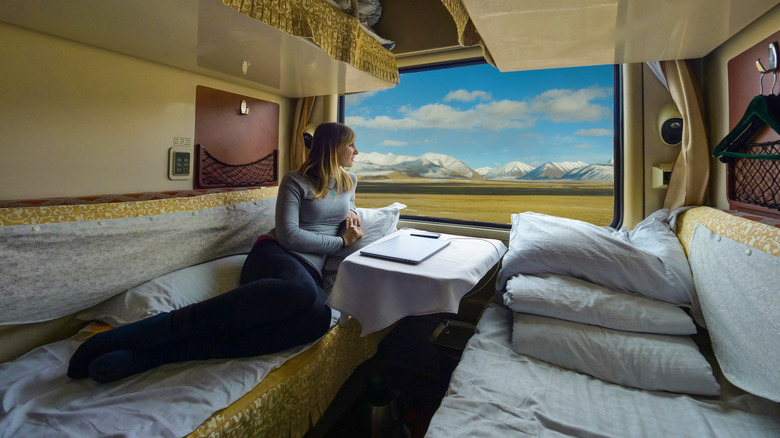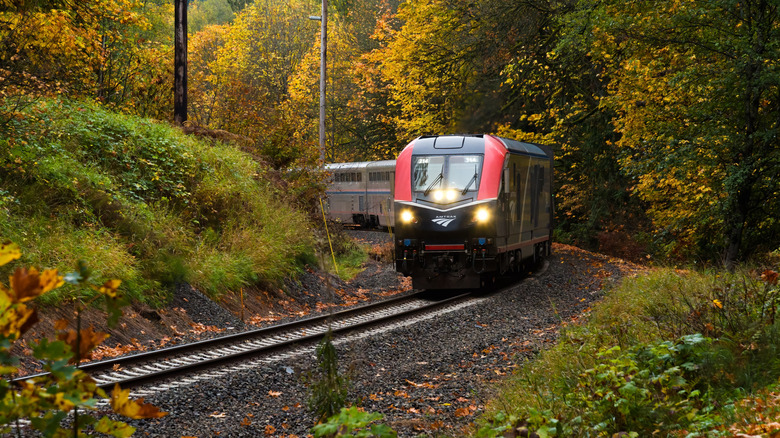The Big Mistake Overnight Train Travelers Should Avoid If They Get Motion Sick
There's just something about train travel that's so romantic. Road trips leave you susceptible to traffic and, if you're in the driver's seat, prepared to have your energy drained; flying comes with a unique set of stressors and too many hours spent lingering at the airport gates. Train travel, however, has a long list of perks. It's one super-affordable way of traveling throughout Japan, whereas some of Switzerland's best views can only be experienced aboard Europe's most scenic train rides.
Trains, as magical as they can be, do not protect travelers from motion sickness. In fact, it can be quite the opposite. And when a wave of nausea hits, there's very little to do. The journey becomes more about making it to the bathroom in time than being awed by the views rushing outside the window.
The most accepted cause of motion sickness is sensory conflict, a misalignment between what your body is feeling — often sudden movement, like that of a train changing tracks — and visual cues. Chances are that you already know whether you're susceptible to motion sickness. If overnight train travel is something you're planning or packing for, throw in motion sickness medicine. Most travelers will avoid packing trivial medicines, but this may just save you from a bad trip.
More tips for train travelers susceptible to motion sickness
Motion sickness medicine will do wonders, but there are other things you can consider to even further reduce the chances of a nauseating episode when traveling by train. Your accommodation will greatly affect your experience, especially at night, when you're lying down and parallel to the tracks.
Train routes can hit rougher patches overnight, and riders may feel more sudden motion than they would during the day. Investing in better sleeping quarters may prevent you from getting a bad night's sleep. Affordable cabins generally have seats that open up into beds or bed bunks, but you may feel that these two options don't protect you from a bumpier ride. First-class cabins with full-sized beds will be more comfortable, and chances are you'll feel the train's movements much less. General motion sickness tips apply to train travel, too. Avoid reading or scrolling on your phone and instead try to set your eyes on the horizon. Lying down, if possible, may also help alleviate nausea symptoms.
Amtrak's 32.8 million riders in 2024, a 15% increase from 2023, indicate that U.S. travelers are considering trains more for domestic travel. There are some great train journeys worth the trip — you may be surprised to learn that one of Amtrak's greatest gems is a train ride from Chicago to the Pacific Northwest. Motion sickness affects even the most experienced of travelers, but packing right and managing symptoms will elevate your trip immensely.

